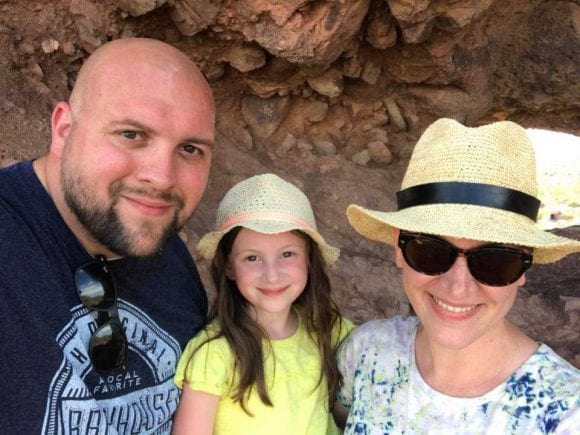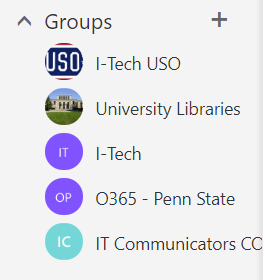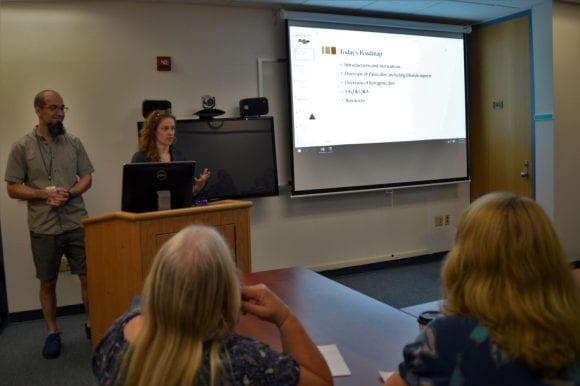Bye: Gale Biddle
Meg Massey has a confession to make; she never used Interlibrary Loan as an undergrad. Like many students, she felt she could find all the materials she needed at her university. It’s a bit
ironic given that she’s now the Manager of Interlibrary Loan at University Park and an enthusiastic promoter of the service. But, like many of us, she learned along the way that Interlibrary Loan is an invaluable resource, and she’s committed to showing others what it can do for them.
Meg grew up in the small town of Richland, Pennsylvania, just outside of Lebanon. It’s the kind of town where everyone knows each other, and you can leave your doors unlocked (just don’t
tell Meg’s dad that since he’s a locksmith!). It’s also in the middle of Amish country, and on a typical Sunday night, 15-20 horse-drawn buggies would be at her neighbor’s house for a
gathering. One of Meg’s favorite memories is when she and her father were outside and heard music coming from an unknown place. They turned to see a buggy go by with a boom box blasting rap music.

A lover of reading, Meg initially thought she wanted to be an English professor. While attending Kutztown University as an undergrad, she worked at her first job as a student assistant in the library. She continued working in a library during grad school, and it was around that time when she began to question if she really wanted to be a professor. Her manager suggested that maybe she should become a librarian. This was Meg’s “a-ha” moment because she realized that she truly loved the work and felt engaged. So, she changed course and became a librarian. After spending a couple of years working in marketing and working at another college, Meg came to Penn State in September 2017.
As Manager of Interlibrary Loan, she’s responsible for coordinating activities, supervising staff, troubleshooting problems, running statistics, and generally making sure that the wheels keep turning. And keeping the wheels turning is no easy task. Interlibrary Loan supplied 65,000 items and received 45,000 items last year alone! I don’t know about you, but those numbers sound mind-boggling. Meg also represents the department on various committees, task forces, and other working groups. But, when you talk to Meg, you can tell immediately that she loves her job and the challenges that must come with it. For her, Penn State has provided so many opportunities to learn and to meet interesting people from different backgrounds. She says that
she’s “been inspired by the people here” and is impressed with how kind and welcoming the community has been to her.
Need help with ideas for some home improvement projects? Are you completely and totally decorationally challenged like myself? You might want to look to Meg for inspiration. In her free time, she and her husband are real DIYers and are currently working on fixing up their new home. He likes to build furniture, and she likes to paint it. They’ve even helped other people flip
houses. And now that they have a place of their own, Meg is really looking forward to making her daughter, Nora, happy by getting her the cat she’s been wanting. When she’s not working on her home or doing something creative like painting and drawing, Meg likes to sing in her church worship team. Singing is something she loves to do and has been doing since she was
child.
So, the next time you or someone you know needs an item that Penn State doesn’t have, give Interlibrary Loan a try. It’s a fantastic service that the libraries provide. And appreciate the
fantastic people who bring that service to you. Fantastic people like Meg Massey!
Ten Random Questions with Meg Massey
1. What song best describes your life? “A Million Dreams” from The Greatest Showman soundtrack (especially the P!nk version)
2. Cereal– Soggy or crunchy? Crunchy
3. If you could trade places with a person for one day, who would it be? My husband. I would love to understand how he thinks!
4. Favorite Movie? Any of the Star Wars movies but especially Return of the Jedi
5. Favorite food? Tacos
6. First thing you would do if you won the lottery? Put it in the bank, pay off debt, and maybe invest in real estate
7. Talent you wished you had? To play an instrument so I could sing and play together
8. Top 3 people, past or present, you would like to have dinner with? My paternal grandmother because I never got to meet her, Jane Austen because I love her, and George Lucas because I want to know how his mind works
9. Last concert you’ve been to? Will be seeing John Mayer in July
10. Is a hot dog a sandwich? No
Article Category: Other












